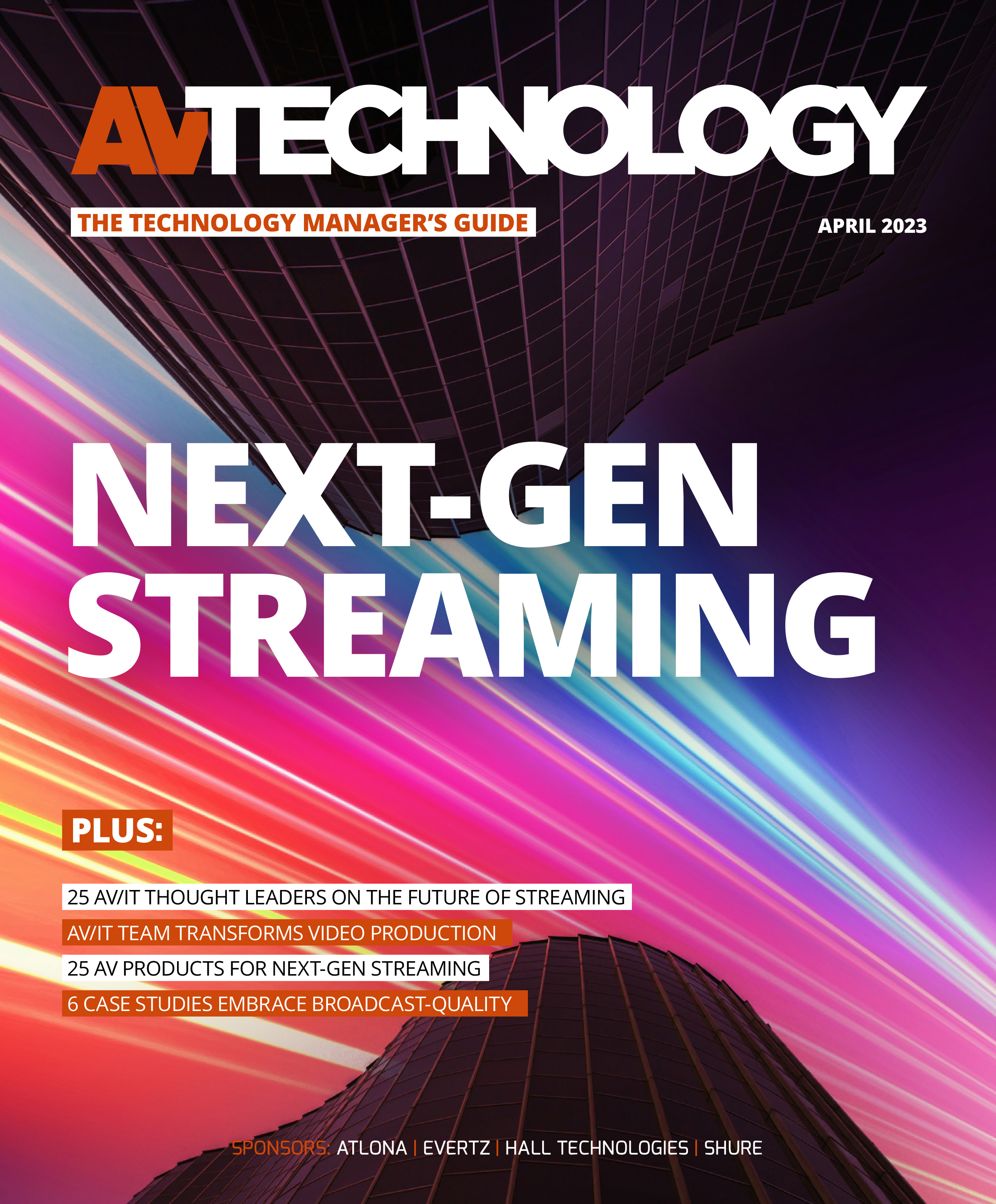As each month passes, and with each AV Technology Manager’s Guide I produce or webcast I moderate, I think it’s time to stop talking about the pandemic because it is in the past. But its impact on our jobs, collaboration, communication, and life, in general, has been like something unworldly.
During the three-plus years since we all took our laptops home to work, teach, and learn, nearly every technology and workflow related to streaming has advanced by what seems like light-years. Artificial intelligence and pattern recognition built into cameras and microphones have made it easier and more cost-effective to live-stream from just about any environment to just about anywhere. Automated workflows have enabled professors to stream classroom instruction with little training needed.
AV/IT Thought Leaders On Streaming
We asked AV/IT industry thought leaders to share their insights into trends and best practices for the next-gen streaming media ecosystem. Below are some snapshots, and check out the sidebar for full interviews. Check back here as the links will become live as they are posted.
Hall Technologies’ vice president of Technology, Ken Eagle, said, “EPTZ cameras can be placed in conference rooms, allowing remote employees to participate in meetings as if they were in the same room. They can be used to capture product demonstrations, interviews, and training sessions.”
As AV-over-IP solutions become the norm, “creating an intuitive streaming media ecosystem can be painless and cost-effective,” said Ken Kobayashi, business manager of Professional Display Solutions at Sony. “Capabilities including PTZ auto framing, PTZ auto tracking, chroma-keyless backgrounds, handwriting extraction, and support of Free-D protocol for simplifying AR/VR production workflows provide interactivity and foster collaboration.”
If we’ve learned anything during the past three years, it is that quality audio is paramount. “Given the prevalence of streaming in nearly every facet of our lives, we know that viewers will tolerate poor video a lot longer than poor audio before tuning out,” added Vanessa Jensen, senior market development specialist at Shure.
“AV and IT teams for enterprises and educational institutions must make sure their AV ecosystem is able to capture and transmit real-time footage in a seamless way for those tuning in from remote locations, and those who want to play it back later,” said David Missall, insights manager, Business Communication at Sennheiser.

As the streaming ecosystem continues to evolve and leverage new technologies, NETGEAR’s director of SMB Product Marketing, John Henkel, added, “It’s important to partner with companies that keep up with the changes and can help you along the way.”
Another key consideration is the cloud. “Adopting cloud workflows makes it simple to stream multiple events or games simultaneously,” said Keith Vidger, principal technical consultant at Panasonic Connect. “Not only do cloud-based productions reduce the amount of technical infrastructure required by up to 70 percent, they also give production crews the ability to scale up and down.”
Paul Cords, director of product management at Vaddio, offers some housekeeping tips: “Graphics can be your friend for citing references, adding speaker titles, and more; look for solutions that work with a variety of streaming platforms, including any niche platforms commonly used by certain applications; local recording can be your friend in case there’s some issue with the streaming service; and lastly, test, test, test. Don’t leave anything to chance.”

